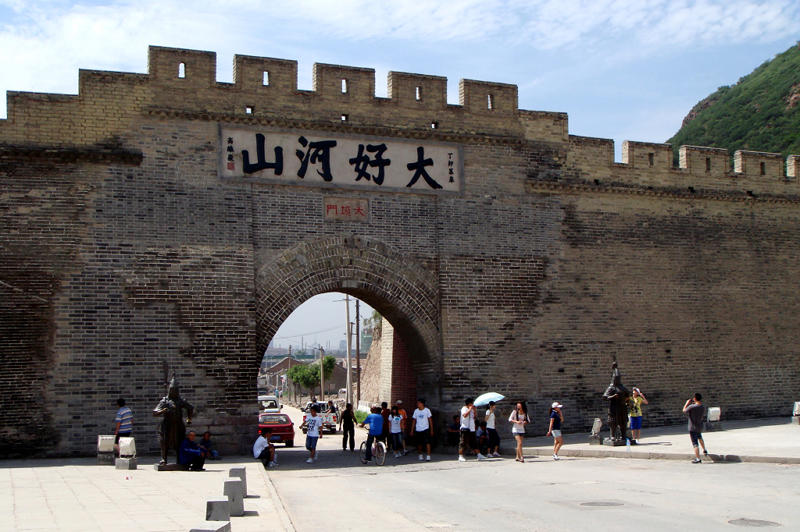Dajingmen on:
[Wikipedia]
[Google]
[Amazon]

 Dajingmen (Chinese: 大境门 / 大境門; Pinyin: Dàjìngmén), also known as Dajing Gate, is an important junction of the
Dajingmen (Chinese: 大境门 / 大境門; Pinyin: Dàjìngmén), also known as Dajing Gate, is an important junction of the
Dajingmen
{{Great Wall of China Zhangjiakou Great Wall of China Mountain passes of China

 Dajingmen (Chinese: 大境门 / 大境門; Pinyin: Dàjìngmén), also known as Dajing Gate, is an important junction of the
Dajingmen (Chinese: 大境门 / 大境門; Pinyin: Dàjìngmén), also known as Dajing Gate, is an important junction of the Great Wall of China
The Great Wall of China (, literally "ten thousand ''li'' wall") is a series of fortifications that were built across the historical northern borders of ancient Chinese states and Imperial China as protection against various nomadic grou ...
in the prefecture-level city
A prefecture-level city () or prefectural city is an administrative division of the People's Republic of China (PRC), ranking below a province and above a county in China's administrative structure.
During the Republican era, many of China' ...
of Zhangjiakou
Zhangjiakou (; ; ) also known as Kalgan and by several other names, is a prefecture-level city in northwestern Hebei province in Northern China, bordering Beijing to the southeast, Inner Mongolia to the north and west, and Shanxi to the southw ...
within the Chinese
Chinese can refer to:
* Something related to China
* Chinese people, people of Chinese nationality, citizenship, and/or ethnicity
**''Zhonghua minzu'', the supra-ethnic concept of the Chinese nation
** List of ethnic groups in China, people of va ...
province of Hebei
Hebei or , (; alternately Hopeh) is a northern province of China. Hebei is China's sixth most populous province, with over 75 million people. Shijiazhuang is the capital city. The province is 96% Han Chinese, 3% Manchu, 0.8% Hui, an ...
. Dajingmen was built in 1644 in the first year of the reign of the Shunzhi Emperor
The Shunzhi Emperor (15 March 1638 – 5 February 1661) was the second Emperor of China, emperor of the Qing dynasty of China, and the first Qing emperor to rule over China proper, reigning from 1644 to 1661. A Deliberative Council of Prince ...
in the Qing Dynasty
The Qing dynasty ( ), officially the Great Qing,, was a Manchu-led imperial dynasty of China and the last orthodox dynasty in Chinese history. It emerged from the Later Jin dynasty founded by the Jianzhou Jurchens, a Tungusic-speak ...
The gate is 12 metres high, 9 metres wide, and 13 metres deep. Above the gate is a terrace measuring 12 by 7.5 metres. The wall above the gate is topped by towers, which are accompanied by a parapet wall on the side. The inscription 大好河山 ("Magnificent Rivers and Mountains") found over the lintel was mounted in traditional Han-Style in 1927 on the initiative of Gao Weiyue (), the ruler of the former province of Chahar (now Inner Mongolia
Inner Mongolia, officially the Inner Mongolia Autonomous Region, is an autonomous region of the People's Republic of China. Its border includes most of the length of China's border with the country of Mongolia. Inner Mongolia also accounts for a ...
).
Just to the west of the gate, on the plain in which the city lies, there is an approximately 100 meter long part of the wall faced in brick; then further west, a very well-preserved Great Wall, built of hard rock, follows the mountainous terrain.
External links
Dajingmen
{{Great Wall of China Zhangjiakou Great Wall of China Mountain passes of China